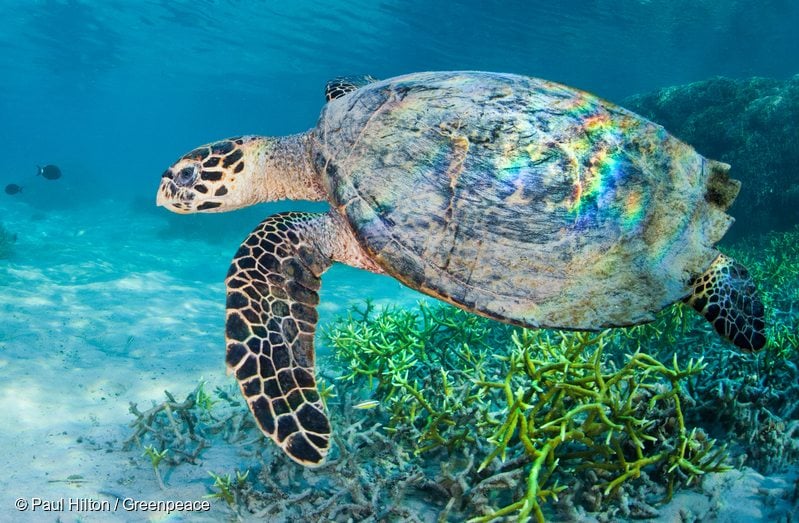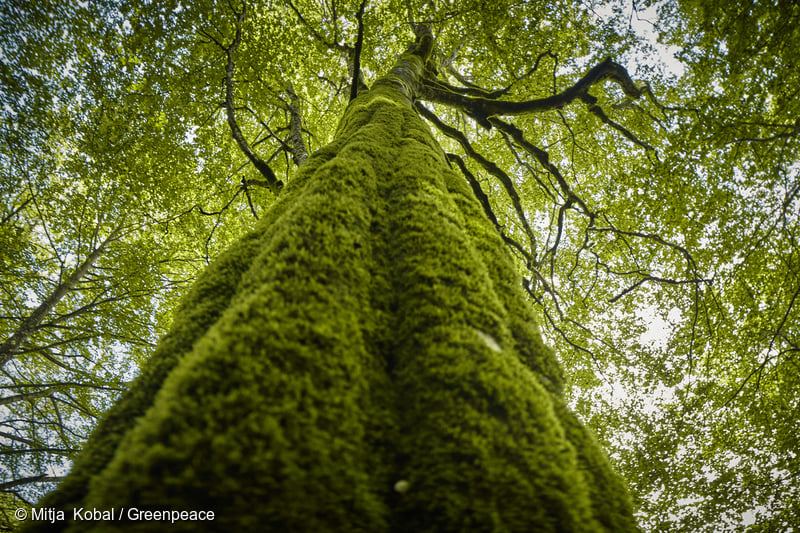
Ben Metcalfe filming during first Greenpeace protest voyage against US nuclear testing on Amchitka.
These days you can’t run an organization without photos and videos for social media, websites, supporter emails, and media.
For most organizations, these assets are an afterthought. But for the Greenpeace global network, visual content – photos, videos, graphics, and animation – is at the very heart of our campaign strategies.
What does it mean to be a visuals-led organization?
Greenpeace’s mission demands that we bear witness to environmental destruction. We document and share what we see so that people all over the world can join us in bearing witness.
In the earliest days of the organization, co-Founder Bob Hunter coined the term ‘mind bomb’ for an image that sends a collective shock through the world leading to action. That is why photographers and video shooters have been core team members since the first Greenpeace action in 1971.
Documenting the climate crisis is one of our main responsibilities, but we know that we cannot stop there. After all, there are now so many images of floods, fires, death, destruction, and climate refugees that seeing them can actually cause inaction through climate despair.
In addition to creating images that depict the severity and urgency of the climate crisis, we must also create images of hope.
One way we do that is by also documenting the beauty and wonder of this planet. This helps us remember what we’re fighting for.

Sea Lion in the Great Australian Bight
We also put forward potential solutions to the problems we see. And when those solutions don’t yet exist, we utilize animation to imagine what a better world could look like.
But the main way we counteract climate fatalism is by shining a light on people taking action against corporations and government inaction. We collaborate with those on the frontlines of the climate crisis to help share their personal stories, thereby showing the strength, diversity, and humanity behind overwhelming climate statistics.
We know that people are inspired when they see others taking action, whether it’s when millions of people speak up or when one person simply refuses to give up.

Greta Thunberg holding ‘Strike for Climate’ sign
It’s one thing for someone to read an article about a protest, but with images they can look into the eyes of the protesters and hear the emotion of their words. They can more easily imagine themselves taking similar action.
When trying to inspire the public through our direct communications, we ask ourselves what image we want to see in the newspaper, what story it will tell, how it will make people feel, and what action they will be ready to take after seeing it. Then we work backwards from there.

Shell Bridge Blockade in Portland
In 2015, there was an aerial blockade underneath a bridge in Portland. Greenpeace USA activists dangled from the end of ropes for 40 hours straight to delay a ship with drilling equipment that was set for the Arctic. The images from that action got media coverage, sparked imaginations around the world, brought in new volunteers, and ultimately led to Shell abandoning the project.

Resist Trump Banner Action in Washington D.C
Another image of hope was Greenpeace USA’s giant RESIST banner next to the White House following Trump’s inauguration in 2017. That was a week with very few signs of hope, but we heard from people across the country about how seeing the image galvanized them in their own fights.
Just as we’ve expanded our definition of ‘mind bombs’ over the past five decades, the way we create images has changed as well.

A critically endangered hawksbill turtle swims over the coral gardens at Kanawa Island near Flores, Indonesia. The island is located in the Komodo National Park.
Photo and video technology is more accessible now than at any other time in Greenpeace’s existence. And we’ve never had so many visual tools in our toolbox. Cameras are smaller and lighter. There’s no need to develop film before knowing if you got the shot. Editing software is cheap and mobile. There is everything from virtual reality to live-streams and memes.
And with new social platforms emerging every year, we are creating more visual content than ever in an effort to meet people where they’re at. For example, we repurposed photos of the RESIST banner action for a TikTok audience watching years later.
@greenpeaceusaOn this day four years ago 🥲 #resist #resistoften #greenpeace #resistance #whitehouse #washingtondc♬ Scouting v2 – BLVKSHP
While visual technology changes, the fundamentals remain the same, and this includes responsible archiving. The Greenpeace Media Library is an online photo and video database covering global Greenpeace campaigns and direct actions, as well as global documentation of environmental issues and solutions, from 1971 to the present. Content is provided by the independent Greenpeace offices across 55 countries and is available to supporters, journalists, academics, and like-minded organizations.

We often say that the ultimate goal of Greenpeace is a world where Greenpeace no longer needs to exist. When that green and peaceful future becomes a reality, the story of how it happened will be told through the photos and videos we are making today.
—
This essay is part of our Perspectives: Our Next Fifty Years series, in which we reflect briefly on our first fifty years, but more importantly, we lay out the future we are building together—collaborative, ambitious, and intersectional. The work ahead won’t be easy, but we’ve never shied away from hard work. We continue to push for policies that recognize the contributions and leadership of marginalized groups, and we amplify their voices, looking to their wisdom to show us the way. We hold corporations accountable, demanding real action that puts people ahead of profit. We work each day with our partners to co-create green, safe planet for all beings. We recognize that equality is not necessarily justice. We demand more from our leaders, from our colleagues, and from ourselves. A green and peaceful world isn’t just a slogan—it is our mission, and it takes each one of us to get there.



